American Merchant Lines - & their Five
Banker Class Ships
Use Google Chrome for this Web Page to load perfectly!
Please Note: All ssMaritime and other related maritime sites are 100% non-commercial and privately owned, thus ssmaritime is NOT associated with any shipping company or any other organisation! Although the author has worked and been involved in the passenger shipping industry for well over 60 years, but due to his old age and poor health, he was forced to retire. Yet, he has completed well over 1,360 Classic Liners, Passenger-Cargo Liners as well as humble converted C3 converted Migrant Liners, which has transported countless thousands folk to the new world, as well on vacations’. I trust the features online will continue to provide Classic Liner and Ship enthusiasts both the information they are seeking, but more so provide a great deal of pleasure and relive many happy memories!
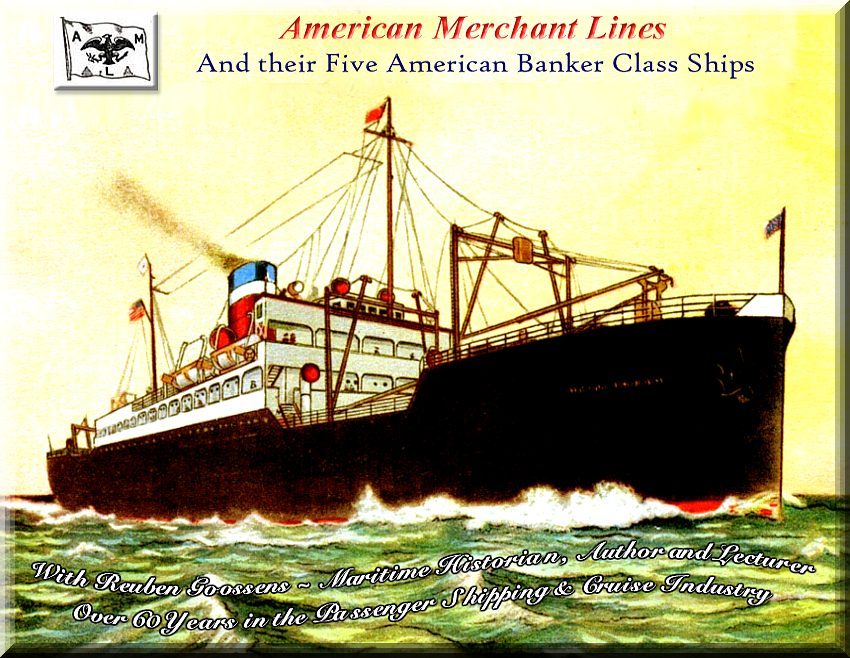
A fine
painting of the
The above was
sourced from a company postcard & was provided by
Please Note: Postcards, photographs & other images are either from the author’s private collection, unless stated otherwise.
A special thank to the ssmaritime supporters for their very kind assistance.
A short History of the “American Merchant Lines”:
In the autumn (fall) of 1923, the Shipping Board disposed of a good number of “United States Lines” vessels, including some being sold to the “Dollar Line”. To replace these, the Shipping Board acquired five transport ships from the “Army Transport Service” and they were reconditioned and when completed they were placed in the service of the “American Merchant Lines” (AML) under the management of “J. H. Winchester and Company”.
Please Note: I
have a Passenger List of the S.S. American Merchant dated August 23, 1928

The official “
Introduction to the American Banker Class of Ships:
These five ships became known as the
“American Banker class of ships”, but as I mentioned above they
commenced their days as simple “
Five of these ships became the American Banker
class ships, and no one would ever argue that these ships were beautiful or
luxurious when they became a 12 passenger cargo liner,
in fact they were far from being that, as they were the most humble of ships.
Yet they proved to be excellent and reliable ships throughout their careers
with AML, during a time they served with them during a time that became known
as ‘between the wars’ years. However, in 1926 they certainly
received an amazing makeover and became greatly improved ships, but I will
cover that a little later in the “S.S. American Banker”
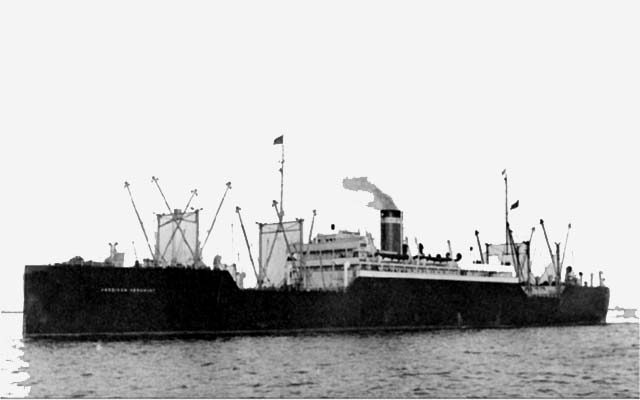
S.S. American Merchant
The “
These ships would depart every Thursday from
Pier 7, at North River
Whilst at the Royal Albert Docks in
With the S.S. American Banker being the lead-in ship, and the only one of the five ships that had a long life, I will feature her story in full below, from her construction, through to her final days having had a number of owners and some six official names.
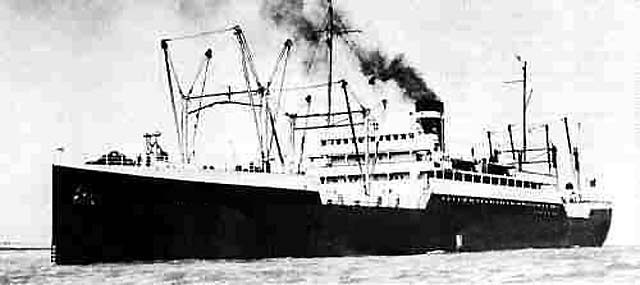
S.S. American Banker is seen on her port side
Provided by
Jonathan
American Banker’s list of names:
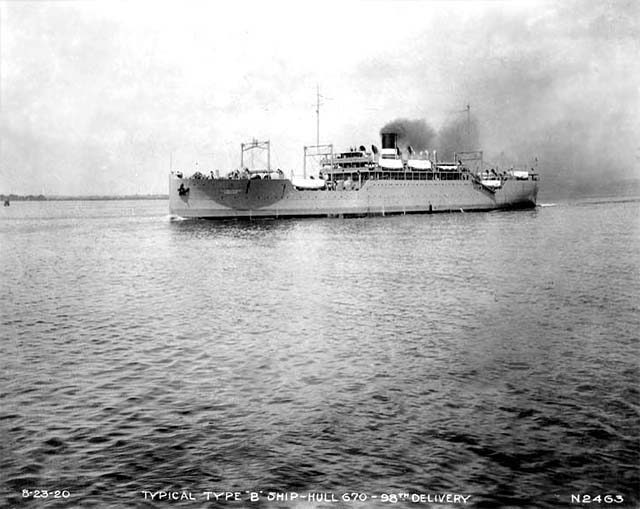
Here we see the
first of the five, USAT Cantigny, which in 1924 be came the S.S. America Banker
**************
S.S.
American Banker Story
Construction of this ship commenced in 1919 by
the “American International Shipbuilding Corporation” at
Although she was laid down as the
“Shohola”, but when she was launched on October 27, 1919 she was
officially named “
The USAT Cantigny had a tonnage of 7,463 GRT (Gross Registered Tons) and like all of her class; visually she had no sheer whatsoever, and had one slender upright funnel, two masts. She was powered by steam turbine engines that powered a single screw that saw her sail at a cruising speed of 15 knots (See Specifications at the bottom of the page for the full details. She operated as a traditional USAT - (United States Army Troopship) until 1924.
With her trooper career over, she, and four of
her identical sisters were transferred to the “American Merchant
Line” (AML) in 1924 and the “
On April 24, 1924, S.S. American Banker departed
on her maiden voyage from
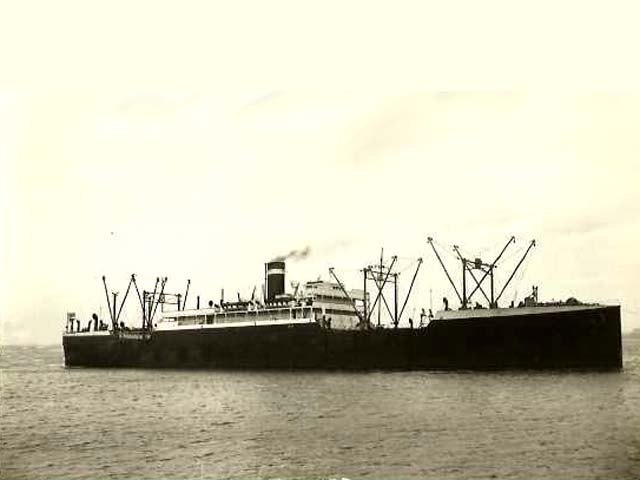
A starboard view
of the 12 passenger S.S. American Banker having just departed
Thus after two years of operation AML decided that these five ships would be given a dramatic makeover. In 1926 the American Banker, as well as her sisters (over a short period of time) were all given a huge transformation, by a designer who was none other than a man who would become the world famous William Francis Gibbs, who would be the designer of the S.S. America (1939), and the super magnificent S.S. United States (1951). He created new public facilities, a Main Lounge and Smoking Room, and a full width Dining Room and accommodations for 80 passengers in an intimate all new more stylish Tourist Class configuration.
Especially after their transformation, those who
loved an ocean voyage and preferred a Trans-Atlantic crossing with a genuine
nautical atmosphere, these five traditional American Banker class ships of the
“American Merchant Lines” offered the perfect setting for a voyage
to the
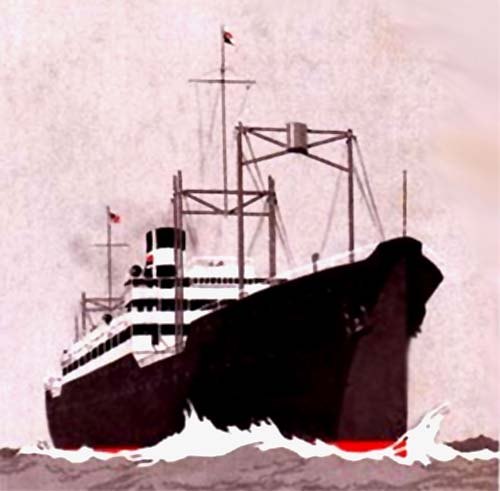
The deck plan below reveals the ships three
passenger decks; Boat/Sports Deck was there were two guest Staterooms.
Promenade Deck which contained a country club like Main Lounge and Smoking Room
located on the starboard side, a Bar was added since
Deck Plan:
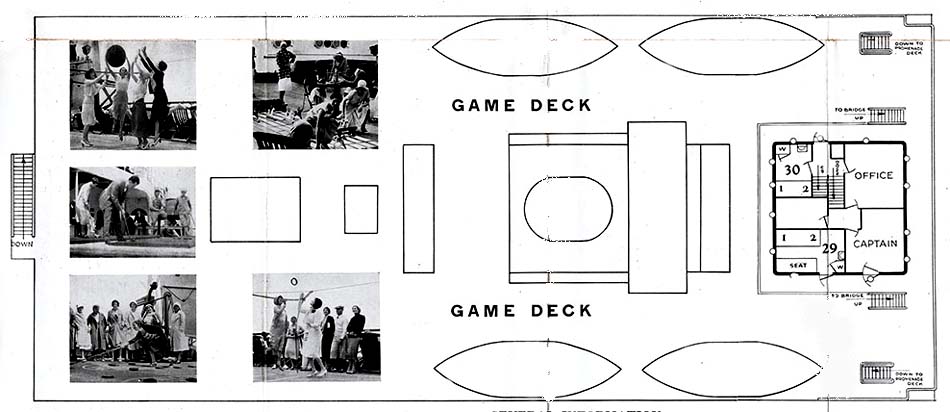
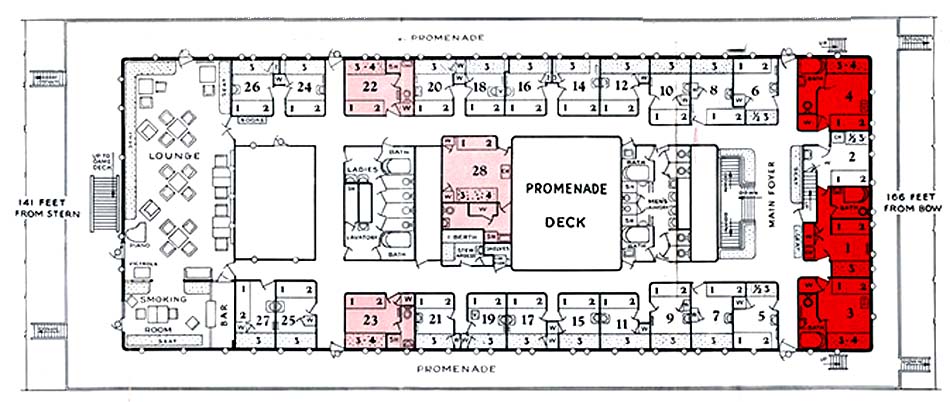
Stateroom 1, 3 and 4 located forward on
Promenade Deck had had private facilities with a washbasin, bath with an
overhead shower, a WC. Whist Cabins 22, 23, and cabin 28 being the only inside
cabin on board, had private facilities with a washbasin, a shower and a WC.
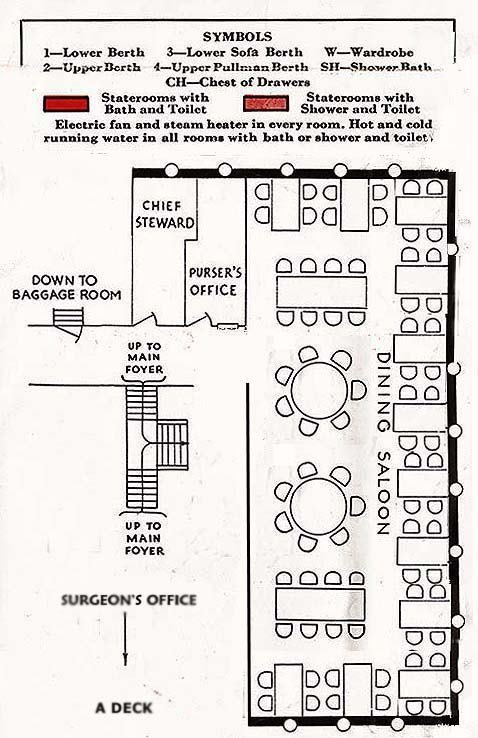
During 1930, AML offered
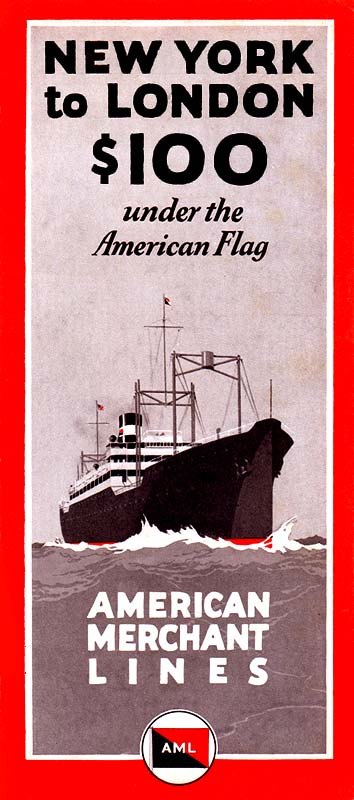
Then in 1931 the American Banker and her four
sisters were absorbed into the “United States Line” and on November
6, 1931, the American Banker commenced her first sailing from
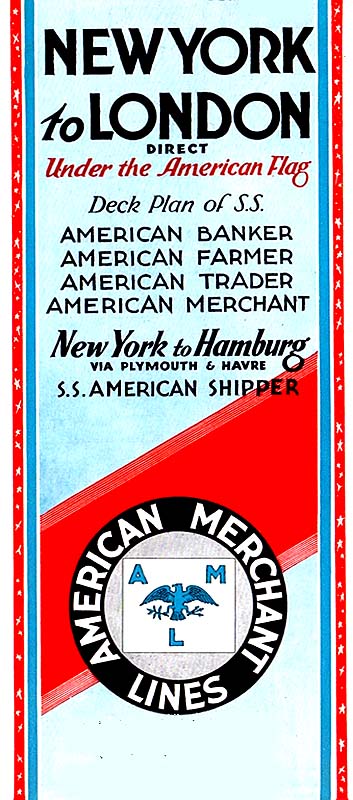
American Banker Class Ships - Photo Album
Boat Deck:
Boat Deck offered a huge Sports Deck, ensuring there was ample of space for everyone on board to enjoy their favourite seagoing games, be it; deck tennis, shuffleboard, quoits, even golf, etc. And aft of the Captains quarters, there were two 2-Berth Staterooms with three portholes on two sides, with a wash basin in the room, and the other facilities being one deck down on Promenade Deck.
As the photographs below have been sourced from brochures I have, they have obviously been in a folded state for many years, thus the fold markings, I have attempted to make rather poor images look as good as possible, but some are not as I like them, but they are the best available. However, they do provide a good idea of these ships after 1926 in and exteriors.
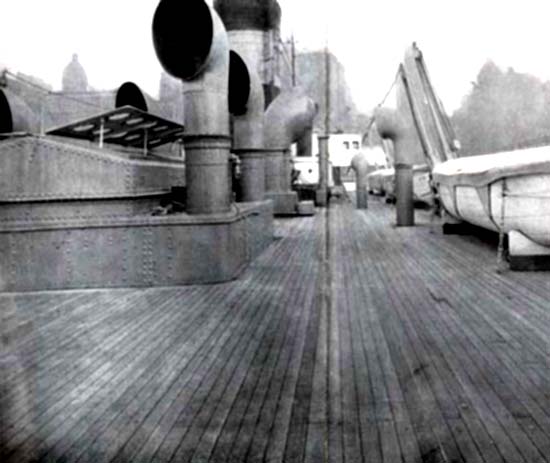
Three views of
these ships spacious Sports Decks
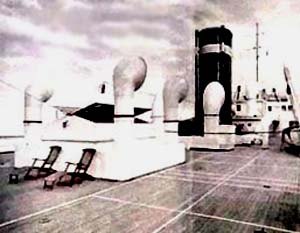
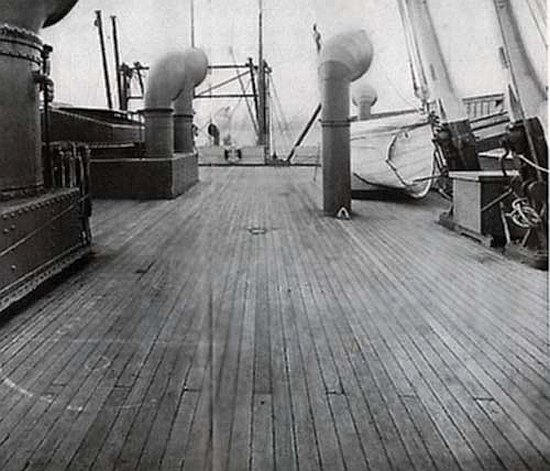
Promenade Deck:
Public Venues:
These 80 passenger passenger-cargo liners
(from 1926) offered a delightful Main Lounge and Smoking Room with a Bar
designed by
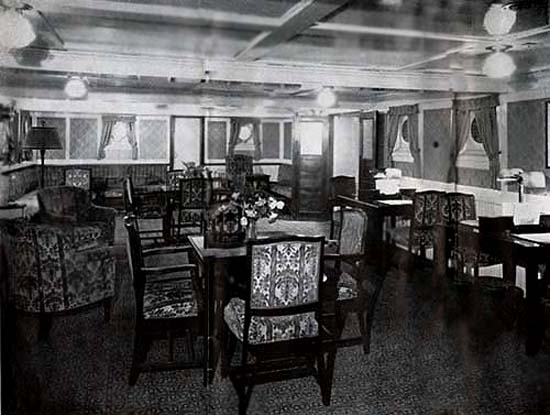
Above &
below: The ships Lounge with its starboard side
small Smoking Room
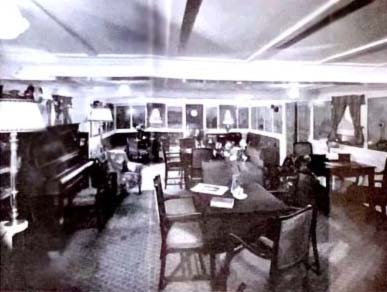
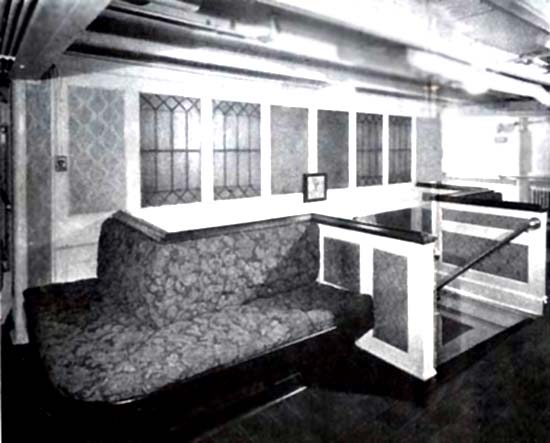
Here we see part
of the delightful Main Foyer forward on Promenade Deck
The stairs go down to A Deck and the Dining Room, as well as the Pursers Office and the Surgery
The Main Foyer had been carefully and
beautifully furnished, featuring deep upholstered lounges that made it a
favourite meeting place to plan the day’s program, be it of sports, cards
or any of the other activities available. Passengers enjoyed sitting here and
have some time chatting with fellow passengers.
Staterooms:
All except one stateroom were outside rooms that offered both light during the day and fresh air, as the portholes opened. There was one interior Stateroom, but all rooms had modern ventilating systems and electric fans installed ensuring ample of clean, fresh air. Three luxury Staterooms located forward on Promenade Deck, Numbers 1, 3 and 4 had a full bath room, with a bath, wash basin and a WC, whilst Outside Staterooms 22 and 23, and inside room 28 had Private facilities with a shower, wash basin and a WC. All other Staterooms had excellent high standard spotless bath and WC facilities available. As I stated earlier, Staterooms 29 and 30 were located up on Boat Deck and they had a wash basin in the room, and used the bath and WC facilities down on Promenade Deck.
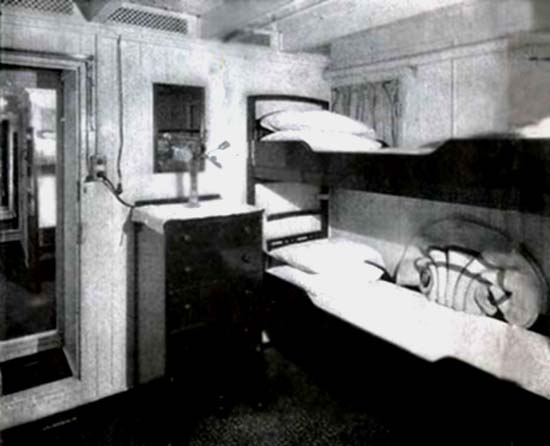
Two berth cabin with portholes and a door as it had a connecting room for families if required
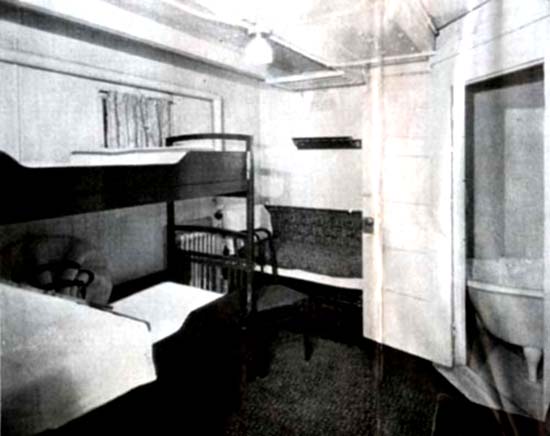
This Two Berth Cabin also had a fold away Sofa Bed for a third guest

Here are some other options of staterooms on board
A Deck:
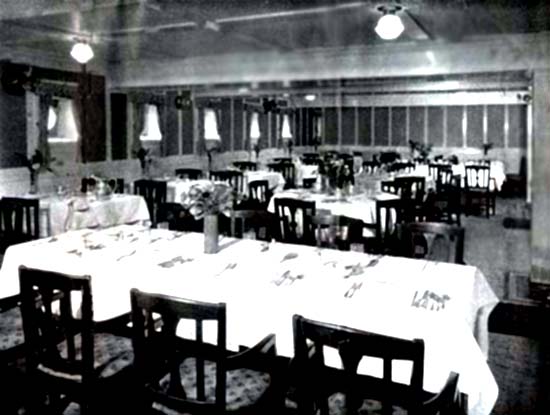
The Dining Room
Besides the
excellent food on these intimate ships, guests were ensured of excellent
service as Dining Room stewards always seemed to remember all those things
their guests liked best and just how they liked them done!
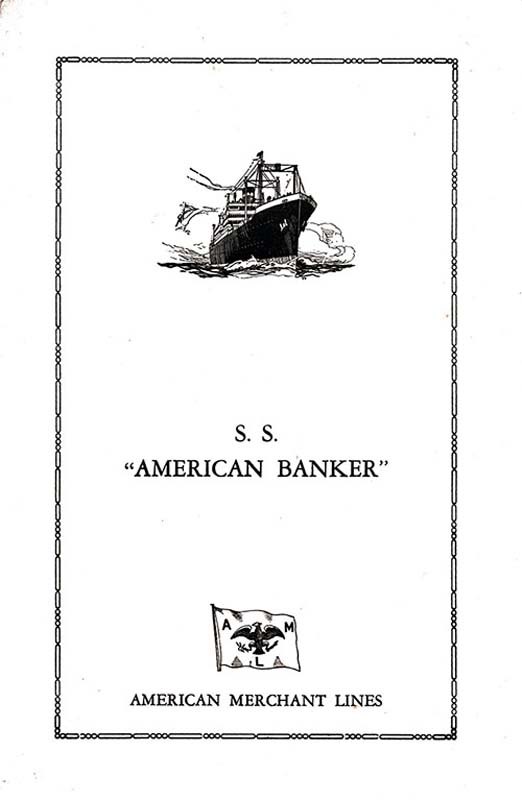
Above &
below: S.S. American Banker farewell Dinner Menu,
June 25, 1932
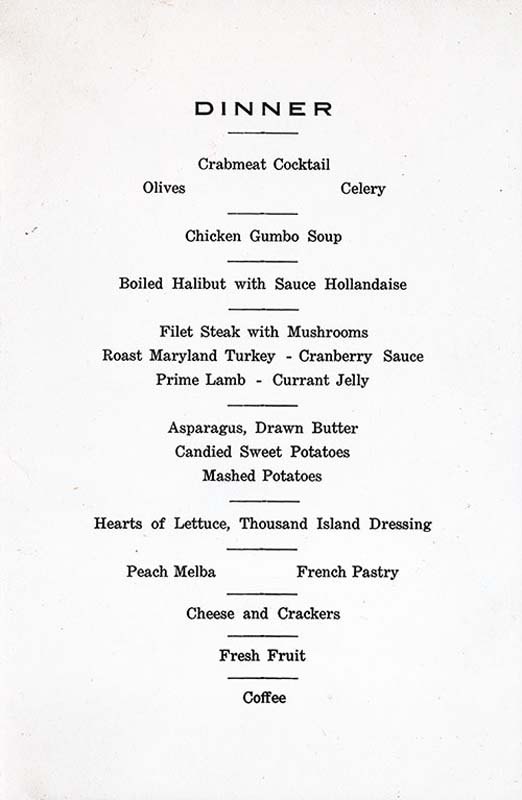
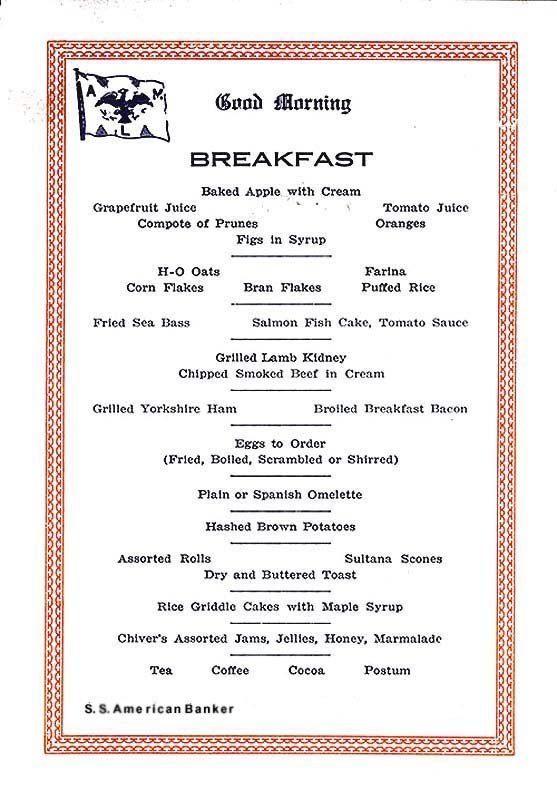
S.S. American Banker Breakfast Menu
S.S.
American Banker Story
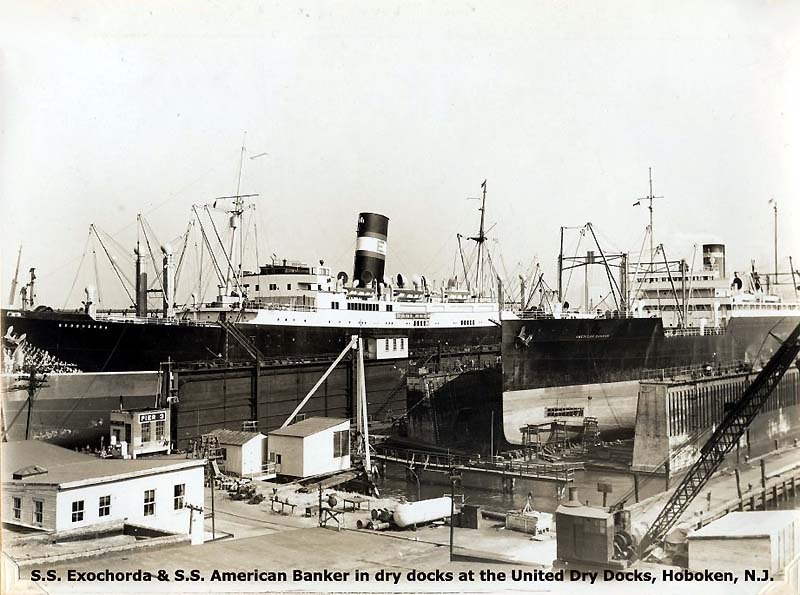
S.S. American
Banker is seen in dry-dock for one of her regular hull maintenance and
repainting
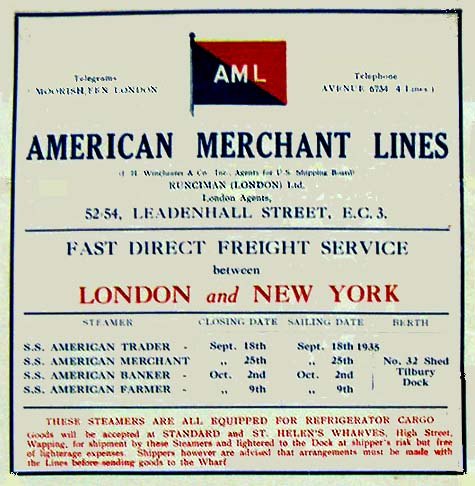
A British
advertisement for the four ships operating on the
Having been with the “United States
Lines” for some eight years, it was on October 8, 1939 that the American
Banker departed
In 1940 the “American Banker” was transferred to the especially created Belgian company, “Societe Maritime Anversoise” and she was then registered in Belgium and renamed “Ville d’ Anvers” and on March 9, 1940 she commenced her first voyage from New York to Liverpool. In February 1945 she was returned to the “United States Line”, but as she was no longer required she was laid up and placed on the market.
Then in October 1946 she was sold to “
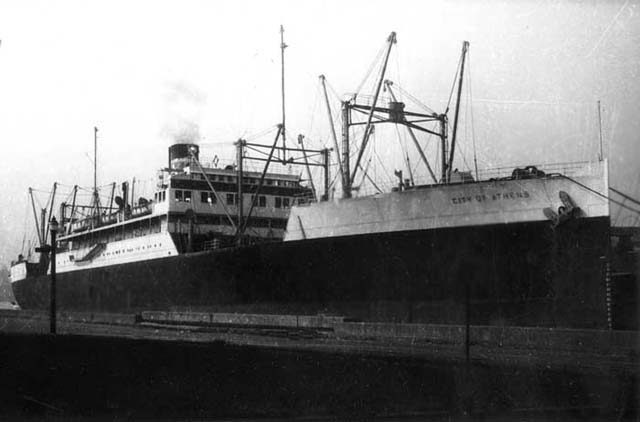
She made further voyages on this service,
including those on January 23, 1947, and again on April 3, 1947. Then on May
30, 1947, she commenced her last voyage for this company when she sailed from
Then on August 13, 1947 she was sold to the
“Panamanian Lines”, who amazingly were the forerunners of the famed
“Home Lines” later. She was renamed “Protea” and they
sent her to
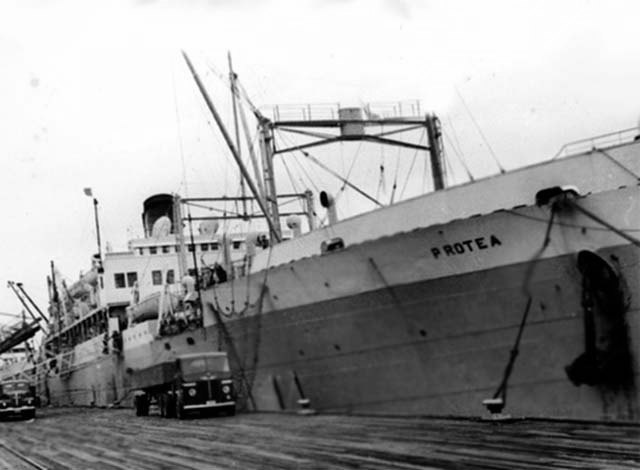
S.S. Protea is seen in an Australian port
Provided by
She sailed for the “Panamanian
Lines” and later
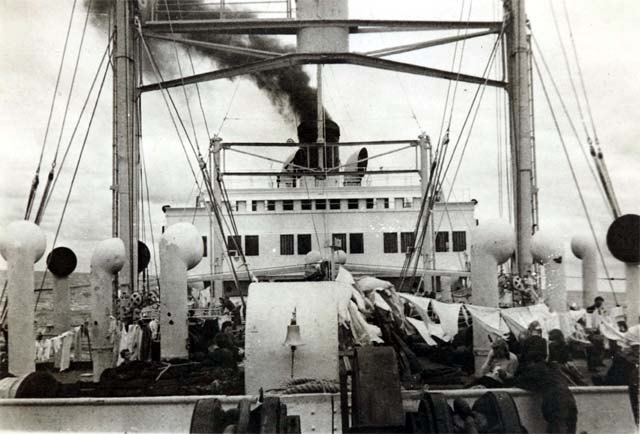
Above &
below: two views of passengers out on
Protea’s decks
Sent in by
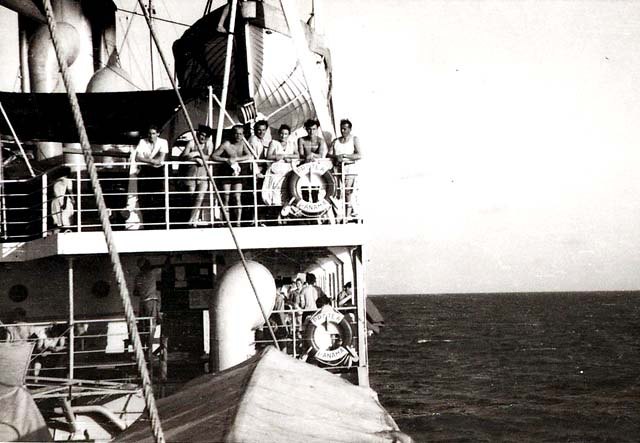
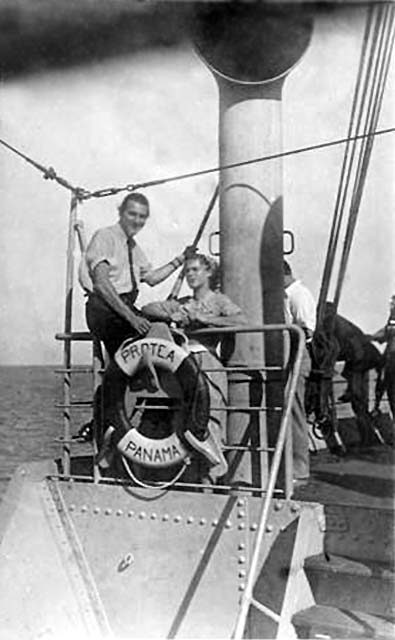
A couple pose behind a lifebuoy up on deck
The voyages I located are as follows;
1. Depart
2. Depart
3. Depart
4. Depart
5. Depart
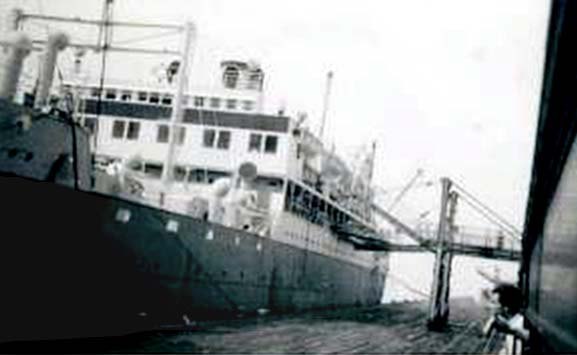
S.S. Protea is
seen in
Sent in by
Then in August 1951 she was sold to
She was then returned to the “Arosa
Line” who decided to rename her
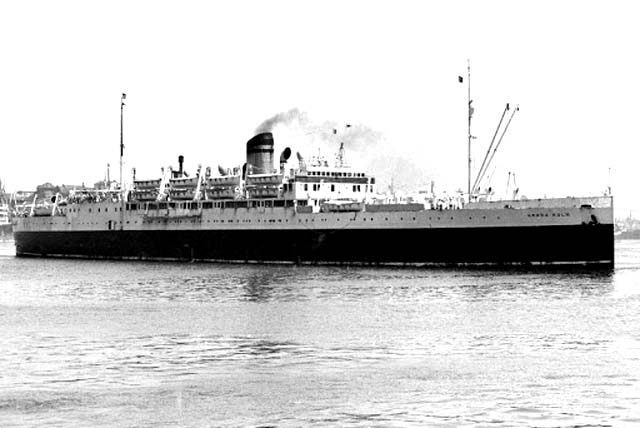
On March 18, 1952, she commenced her first
voyage from
In due course she was again updated and painted all white with her accommodations greatly improved.
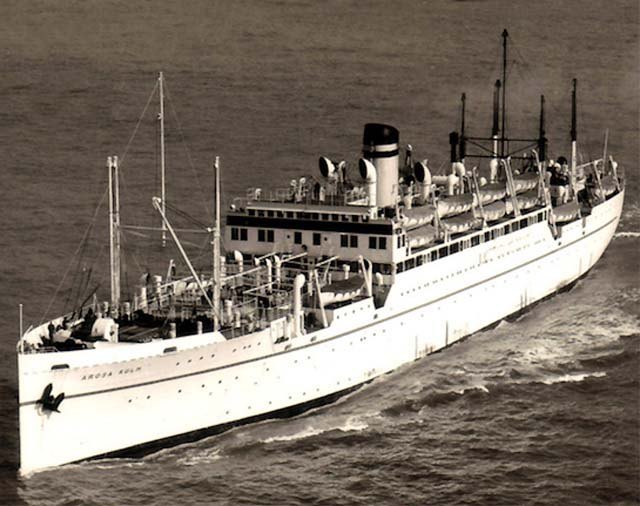
Here we see the “
**************
S.S.
American Trader, Farmer, Merchant and Shipper:
American Trader:
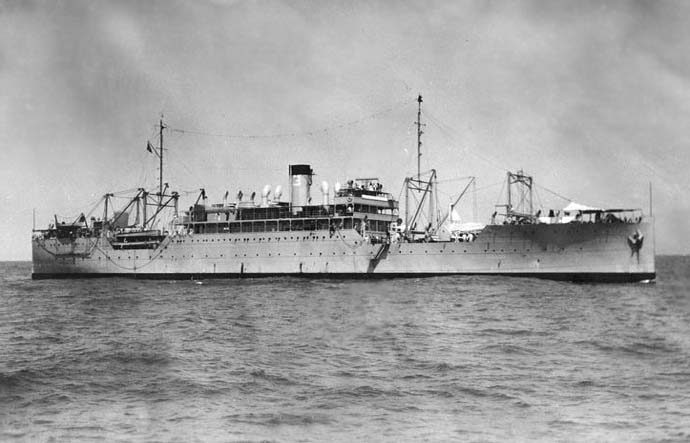
Seen here at the
USAT
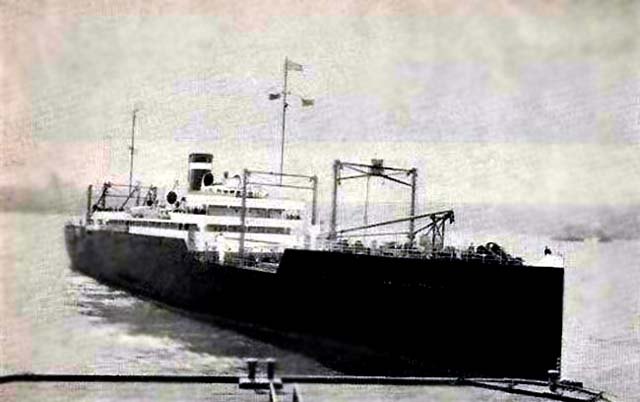
S.S. American
Trader
The
The crew abandoned ship and did so in four
lifeboats, but due to the high seas they were quickly separated. Apparently the
U-boat was observed to surface, circled the sinking ship to identify her and
then left without questioning the crew after the ship sank by the stern. The
master and 13 crew members who were in one boat were picked up by the Belgian
steam trawler Transport about 12 miles west of
**************
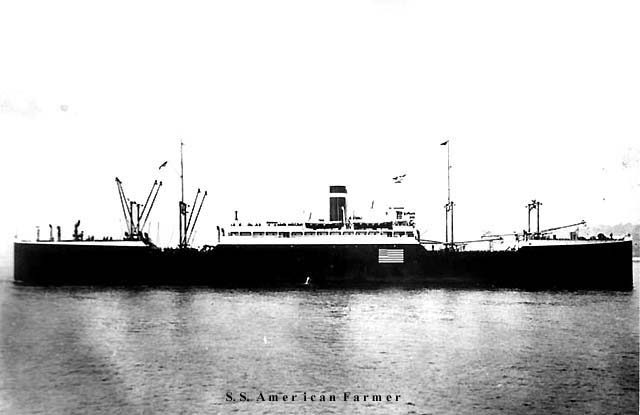
S.S. American
Farmer seen in 1939 towards the WW2 years
On April 14 1941, 01.17 hours she was suddenly hit aft by one of two torpedoes fired by the German U-Boat U-52 about 700 miles east of Cape Farewell. Then at 02.10 hours, the ship sank having burned fiercely after having been hit again, this time by a G7a torpedo at 01.30 hours. The master, with nine crew members and two of her passengers were the only survivors. The ship rests at location 59° 50'N, 29° 30'W.
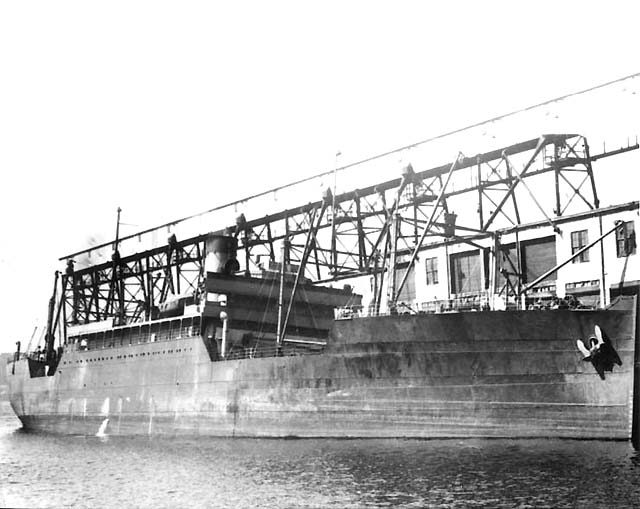
**************
American Merchant:
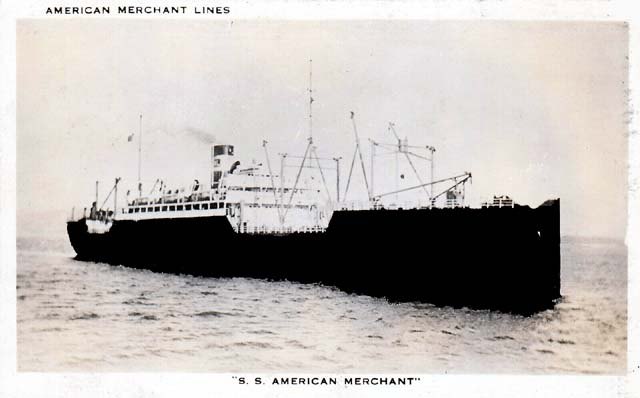
A postcard of the
S.S. American Merchant
S.S. American
Merchant - A Passenger
List:

S.S. American Merchant
In 1926 the American Merchant, was given an
interior refit by
This is a Passenger List of her August 23,
1928
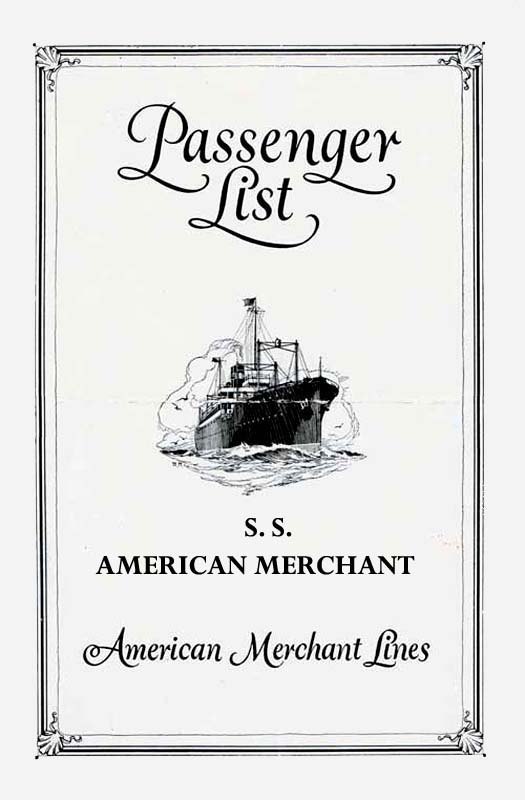
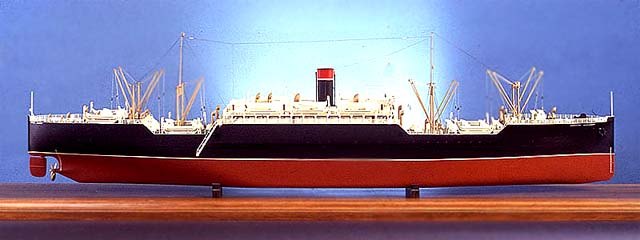
A model of the American Merchant
American Merchant’s Final Day at Sea:
The
**************
American Shipper:
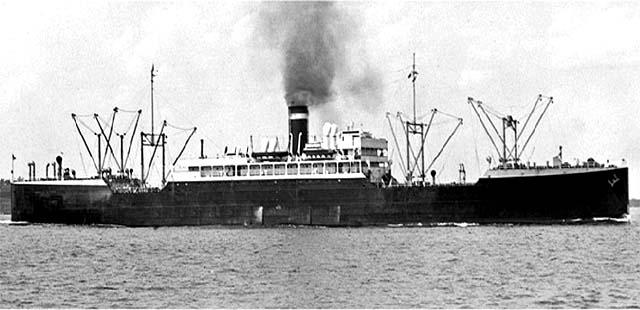
S.S. American Shipper
I am sorry that this photo is so poor, but it is the best available
On September 2, 1940, at 16.35 hours, she was
suddenly hit by single G7a torpedo from a spread of three torpedoes that were
fired by the German U-Boat U-47 just northeast of
Rockall. The ships sunk rapidly at 17.01 hours, but thankfully all her crew of
54 was saved. The ship rests at location 58° 20'N, 12° 00'W.
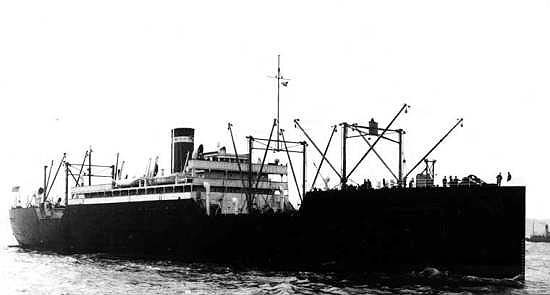
She is seen here
in her final days as the
**************
Built by: American
International Shipbuilding Corporation, at
Hull N° & delivered:
American
Banker:
Original
name: Shohola,
launched as
American
Trader:
Original
name: Sitkum, launched
as
American
Farmer:
Original name: Sisseton, launched as Ourcq.
American
Merchant:
Original
name: Sisladobsis, launched as
American
Shipper:
Original
name: Skanawono, launched as
All Ships:
Tonnage: 7,463 GRT.
Length: 436 ft -136 m.
Breadth: 58 ft - 17.7 m.
Engine: 2 x Steam Turbines DR Geared to a single shaft 1,290 HP.
Engines
by: General
Electric Co.
Boilers: 6 Babcock & Wilcox boilers, 200 psi Sat.
Generators: 3 200Kw 120C D.C. Ships Service Generators.
Propeller: Single Screw, 6,000shp.
Speed: 15 knots service speed, 17 maximum.
Passengers: 12 in 1924, 80 after
1926 refit.
**************
American Banker Class Ships
Of the “American Merchant Lines”
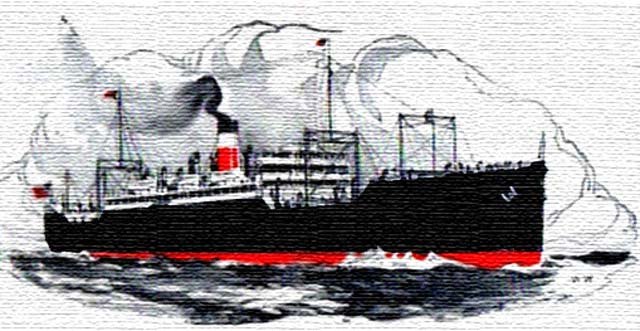
A fine artist’s impression of the “Banker Class Ships”
By an unknown artist
**************
I watched them come, I watched
them go and I watched them die.”
Featuring over 1,362 Classic
Passenger Liners, Passenger-Cargo Liners & Classic Cruise Ships!
Or ENTER HERE
For interest: Sadly an email service to ssMaritime is no
longer available, due to the author’s old age and chronic illness as well
as being disabled, etc. In the past ssMaritime received well over 120 emails
per day, but
**************
ssMaritime.com & ssMaritime.net
The Author has been in Passenger Shipping
& the Cruise Industry for well over 60 years
In addition he was the founder of
“Save the Classic Liners Campaign” in 1990.
Please Note: ssmaritime and
associated sites are 100% non-commercial and the author seeks no
funding or favours of any shape or form, never have and never will!
Photographs
on ssmaritime and associate pages are by; the author
or from the author’s private collection. In addition there are some
images that have been provided by Shipping Companies and private photographers
or collectors. Credit is given to all contributors. However, there are some
photographs provided to me without details regarding the photographer/owner
concerned.
This
notice covers all pages; although,
and I have done my best to ensure that all photographs are duly credited and
that this notice is displaced on each page, that is, when a page is updated!
ssMaritime is
owned & © Copyright by

